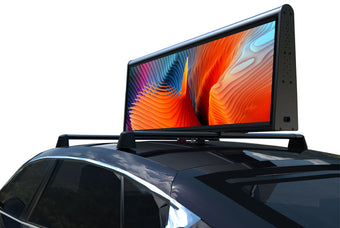Machine vision has long been used in manufacturing automation for various applications, including automated inspection. Machine vision systems use cameras to capture images of products or components and analyze them for defects or errors. These systems are capable of processing high volumes of data quickly and accurately, making them essential for many manufacturers who need to inspect a large number of products quickly.
Inspection with machine vision is usually done through the use of special algorithms that can detect certain features or patterns in the image that indicate a defect or error. The system then flags these potential issues so they can be addressed in a timely manner. This helps reduce costs associated with rework, scrap, and other quality control problems. Additionally, it ensures that the product meets all relevant industry standards and regulations.

Pin-Point Accuracy
In addition to helping manufacturers reduce costs, machine vision systems also provide improved accuracy in their inspections, as they are capable of detecting even the smallest defects and errors. This allows for greater control over quality assurance and can help ensure that only the highest quality goods reach customers. As such, many automated inspection companies now rely on machine vision technology to deliver fast, accurate results for their clients. By utilizing this technology, companies can become more efficient with fewer costly mistakes resulting from defective inspection processes. Ultimately, machine vision is a great tool for improving manufacturing automation company processes when it comes to automated inspection. It provides better accuracy, faster processing speeds, lower rework costs, and increased customer satisfaction all at once. With its many advantages, machine vision is quickly becoming a must-have for any automated inspection system.
It's like having a reliable and tireless set of eyes that are always focused on ensuring the highest quality of manufacturing and production operations. These amazing integrated components use information extracted from digital images to guide and automate a wide range of processes, from quality control checks to assembly verification and inspection operations. These smart machines can also direct equipment to position materials accurately and run go/no tests and quality control checks, making the job of an operator or inspector much more manageable. They take the burden of these mundane tasks off human inspectors and operators, allowing for 100% inspection of products or parts. What's more, this has resulted in improved yields, reduced defect rates, increased quality, lower costs, and greater consistency of process results. The applications for machine vision systems are endless, and they can be adapted to virtually any industry. It's like having a trusty and efficient assistant that never gets tired or makes mistakes!

Faster Than Human Performance
The beauty of the machine vision system lies in its ability to acquire and process information with ease, making it a valuable tool in modern automated production processes. It seamlessly integrates with design and processing control information, bringing flexibility and automation to the forefront. This amazing technology has also found its way into working condition monitoring, finished product inspection and quality control. Not just that, machine vision is also able to handle dangerous work environments where manual vision is out of the question.
With the ability to rapidly gather vast amounts of data, machine vision systems have become a game-changer in modern automated production processes. Its automatic processing and seamless integration with design and control information make it an invaluable tool in areas such as quality control, finished product inspection, and working condition monitoring. In environments where manual operations are not feasible, or where manual vision falls short, machine vision takes center stage, enhancing production flexibility and automation like never before.
This cutting-edge technology is all about computer vision research and provides a unique perspective on visual inspection. Unlike traditional computer vision, this innovative technology can automatically inspect entire products, making it crucial for quality control and ensuring the highest product standards.

Examples Of How Machine Vision is Being Used:
1. Predictive Maintenance
In the world of business, companies that rely on physical components to manufacture products or provide services understand the importance of keeping their machinery in top-notch shape. However, even with regular maintenance, unexpected breakdowns can occur which can come to a standstill. This is where Predictive Maintenance comes in - a game-changing process that uses the power of machine learning and IoT devices to keep a close eye on machinery and components. With sensors collecting data points and identifying signals, businesses can take proactive corrective actions that prevent assets and components from breaking down. It's a smart and savvy approach that ensures smooth operational workflow and keeps businesses thriving. Predictive maintenance is a smart and efficient way to tackle maintenance issues before they become major problems. With the power of machine learning you can monitor your machines and components in real-time, using advanced sensors to collect data and identify critical signals. By taking proactive measures to prevent breakdowns and make timely repairs, you can save time, money, and resources, and keep your business running smoothly. Say goodbye to downtime and hello to optimized performance, with the help of predictive maintenance.

2. Packaging Inspection
Machine vision can be used for sorting, scanning and detecting anomalies on packaging lines. This computer vision is being used to detect faulty components during production. Incredible advancements in this solution involve capturing photos of work on the production line and processing them through sophisticated software. As they are analyzed, the images are checked for accuracy, length, width, intactness, etc. With this innovative system in place, manufacturers can ensure that the units they produce are of the highest quality and meet stringent industry standards. Not only is this technology providing a reliable system of inspection and quality control, but it also increases production efficiency. By automating inspection tasks and enhancing production processes with machine vision technology, manufacturers can optimize their operations and maximize output while ensuring high-quality results.

3. Reading Barcodes
Imagine trying to read and analyze hundreds, even thousands, of tiny barcodes every single day. It's a difficult task that our human brains simply can't handle on a large scale. This problem is becoming more pronounced as the tech market demands smaller and smaller printed circuit boards to fit into cell phones and other devices. To keep up with this demand, manufacturers are turning to a technique called "panelization" to produce higher volumes of PCBs efficiently.
The tech market is booming and demands for smaller and smaller printed circuit boards are on the rise. However, processing the hundreds and thousands of barcodes needed to keep up with production is a challenge that even the most skilled humans can't manage. To meet this challenge, manufacturers are turning to the innovative process of "panelization" as a solution. With this cutting-edge technology, manufacturers can produce higher volumes of the tiny PCBs needed for cell phones and other mobile devices, ensuring that the tech industry stays ahead of the game.

4. Product and Component Assembly
Machine vision has revolutionized the manufacturing industry by creating solutions that ensure product quality, safety, and adherence to production guidelines. Their innovative suite of tools helps businesses keep their assembly standards high and production lines humming, so they can deliver top-notch products to customers every time. With machine learning on your side, you can rest assured that your manufacturing plant is performing at its best, every day.
The benefits of using machine vision technology in product and component assembly are considerable. Some of the most popular applications of machine vision in manufacturing assembly lines include; automated part and product sorting, defect detection, and visual guidance for robots. You can even use it for counting and tracking parts in order to maintain inventory accuracy, identify flaws or malfunctions, detect counterfeits, or perform other quality tests. By automating these processes with machine vision technology, manufacturers can speed up production times and ensure high-quality products and components every time.

In Conclusion
Technology is revolutionizing the manufacturing sector, helping to overcome obstacles ranging from precise inspection and control applications to automated issue detection. By calibrating & tuning settings with its assistance, industry professionals are able to work more efficiently, all while producing higher quality results!
Machine vision is now a must-have for businesses in the manufacturing automation company sector. With the power of technology, manufacturers can now speed up production efficiency and reduce errors. From inspection to controlling & automation, calibration & tuning right down to automated issue identification, this tool helps them tackle an arsenal of challenges. It's no wonder why so many businesses have embraced this incredible technology and are reaping the rewards of its endless potential. All these benefits make it clear why machine vision is becoming a critical component in manufacturing automation today. Machine vision is truly a game changer, one that will continue to play an important role in the manufacturing industry for many years to come.












0 comments. Write a comment